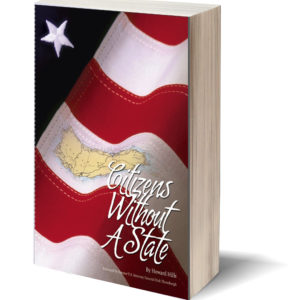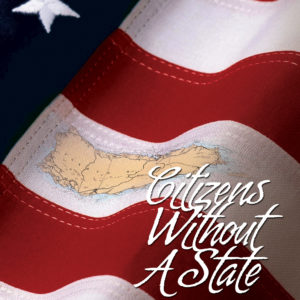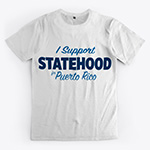Still hanging out with friends and family? Here’s a new game we just discovered: Statehood. This is a card game played with a special deck of cards, called Statehood Cards. We noticed the company that makes the cards because they are using our logo at their website.
They produce a special pack of playing cards that has 52 cards — the 50 current states plus Puerto Rico and Washington D.C. — plus four wildcards. The wildcards are the remaining U.S. Territories: Guam, American Samoa, the U.S. Virgin Islands, and the Northern Marianas.
Each card has the postal abbreviation of a state or territory, its seal, the classic suit and number marks for playing cards, and the number of electoral votes it has. They gave Puerto Rico six and the other territories one each. The electoral votes show the value of the card.
You can buy the cards at the website linked above (they donate a percentage of sales to causes).
How to play Statehood
Two to four players take turns choosing cards and discarding them as in games like rummy, building up a hand. Players begin with seven cards and discard or draw to keep seven cards in their hands. If you draw a territory or Washington, D.C., you can declare statehood. For the wildcards, the player declares statehood for say, Guam, and lays down one state card to defend it. So you might declare Guam a state and lay down Oklahoma to defend it. If you declare D.C. a state, you can lay down one, two, or three state cards to defend it — but they must all be blue cards. To declare Puerto Rico a state, a player must lay down his or her entire hand. In each case, the total of the state cards’ electoral votes make up the defending points.
Once a state has been declared, the other players have a chance to challenge the declaration. Say you don’t want Guam to be a state. You can challenge it by playing a card with a higher number of electoral votes than Oklahoma. Another player can play a card with even more electoral votes. Each player can challenge each declaration of statehood, and the player with the highest electoral votes wins the card for Guam. Only red cards can be used to challenge D.C.
Whoever is successful — declaration or challenge — in the round sets the winning cards on the table and will get all the points at the end of the game. Then players draw up to seven again and play continues. The object is to get the largest number of points — electoral votes.
Puerto Rico is different
Declaring statehood for Puerto Rico ends the hand. All challenging players lay down six cards, and the highest point total among them (the largest number of electoral votes) gets six points. They also get the points from any wildcards or the DC card if they are in the hands of the unsuccessful challengers. Puerto Rico’s statehood must be declared — ready or not — when the last card is drawn. The Puerto Rico card cannot be discarded; if someone discards Puerto Rico, they forfeit the hand and each other player gets six points.
This sounds like an educational game. Players will learn the names and abbreviations of all the states, as well as their current electoral vote count. It also sounds like fun. If you play Statehood, let us know how you like it. But don’t just play statehood — reach out to your representatives in Congress and let them know that you are serious about statehood for Puerto Rico.








No responses yet